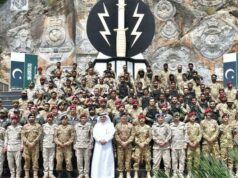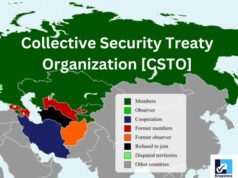BY AIR MARSHAL SBP SINHA
The geopolitical environment and India’s volatile neighbourhood places a unique responsibility on the armed forces. It has to be prepared for any eventuality at all times. But the polarising debate in recent months over defence acquisitions has raised questions about indigenous defence production. There are a few names thrown around in such discussions, the foremost among them being Tejas, the indigenous Light Combat Aircraft, designed jointly by the Aeronautical Development Agency (ADA) in partnership with Hindustan Aeronautics Limited (HAL) as per the Air Staff Requirement (ASR) issued by the Indian Air Force ((IAF) in 1985. At all stages, the IAF has wholeheartedly participated and supported in this vital indigenous design and development project.
It is said at times that Tejas production is getting delayed due to the IAF changing specifications. The ADA, the design authority for Tejas, in consultation with HAL, incorporates design changes based on observations made during test flights by the National Flight Test Centre. The ADA makes all such changes in consultation with HAL and other agencies and these changes are issued as “change notices” with requisite documentation and manufacturing technology. While the IAF participates in all these consultations, it is not authorised to issue change notices. The IAF has not changed the 1985 ASR, except for granting concessions after limitations were encountered during the design and development of the aircraft. Many design changes were incorporated in the Tejas to bridge the shortfall from ASR while some design changes were incorporated to enhance the safety of flight, based on lessons learnt from recent accidents and incidents. Evolving design changes are part of any aircraft design and development process. Surprisingly, the ADA never complains of the IAF making any changes. In contrast, HAL off and on blames the IAF for changing specifications. The IAF is a customer and it can only issue the ASR. But, HAL, as the original equipment manufacturer of the Tejas, has to issue the specifications of the aircraft and its components in the maintenance and piloting manuals delivered along with the aircraft to the IAF as part of contracted documents.
To help HAL expedite the production of Tejas Mk 1, the IAF accepted declaration of initial operational clearance (IOC)-I in January 2011. The final IOC, that is IOC-II, was issued in December 2013, which was followed by the delivery of IOC Tejas to the IAF starting from March 2016. Further, the Air HQ held a meeting in 2015 with HAL, ADA, DRDO and other agencies for faster and larger induction of Tejas in the IAF. During this meeting, it was decided that Tejas with SoP 18 proposed by HAL and ADA along with four essential capabilities of AESA Radar, BVR missile, air-to-air refuelling and Electronic Warfare (EW) suite was acceptable for production in large numbers. The Tejas in this SoP was named as Tejas Mk 1A and its technical evaluation by the IAF is now at the final stage. Tejas’ flight envelope is still in the process of being expanded to its full capability. The Tejas fleet does not have a two-seater, which is essential to train pilots. Lack of a two-seater prevents the IAF from posting junior pilots to Tejas squadrons. The EW suite for Tejas Mk 1A, the most crucial element to enhance survivability of the aircraft and pilot(s), is not yet developed. HAL has recently selected Elisra of Israel for the design and development of EW suite.
HAL manufactures aircraft and its components based on training, documentation, drawings, work cards, material, aircraft and components to specifications provided and stipulated by the OEM. Such manufacturing has everything defined with very few variables. In contrast, the production of Tejas aircraft is very different and complex because the aircraft is still at the design and development stage. The standard of preparation of an aircraft defines its capability, which is evolving for Tejas as all its versions are presently in the design and development phase. This requires a production capability with a robust supply chain supported by competent sub-vendors to help HAL production line to quickly adapt to such changes. Therefore, HAL needs to bring in institutional flexibility to quickly adapt its production line to such evolving changes during the design and development phase of Tejas or any subsequent aircraft. The IAF plans to induct Tejas in all versions to arrest the depletion of combat squadrons. There is no ambiguity about IAF placing orders for more Tejas versions as the aircraft matures. But orders for Tejas can only be placed following the due process and after ascertaining the capabilities of the aircraft. The IAF and HAL can succeed only together, not in isolation.



